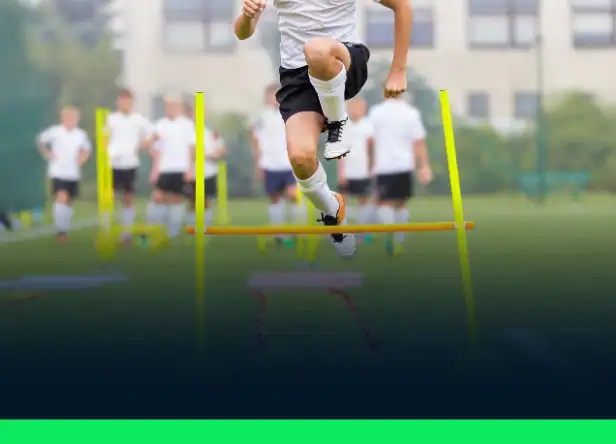We will investigate what a corner kick is in this all-inclusive article, analyze the appropriate technique and execution, cover tactical positioning strategies, and understand when this essential restart scenario arises. Soccer is a vibrant game that among both players and fans inspires love and emotion. Among the several aspects of the game, the corner kick stands as one of the most tactically important set pieces. We will explore specifically what a corner is, how to carry it out successfully, strategic player positioning, and when this circumstance presents itself throughout play. The value of both physical fitness and tactical preparation for corner kick scenarios will also be discussed. Let’s find out why the corner kick is such a turning point in the lovely game.
What is a corner kick?

After being touched by a defending team member, without a goal being scored, a corner kick is given when the ball wholly crosses the goal line—either on the ground or in the air. Once a corner is given, the offensive team gets a chance to launch the ball from the corner arc close to the goal line. Intending to score directly from the corner delivery or to set up a goal-scoring opportunity through later action, attacking players then position themselves strategically inside the opposition’s penalty area.
This 12.1% figure captures a larger trend: set pieces are being used more successfully in MLS than previously. An MLS game generates roughly 9.4 to 9.5 corners on average, showing the great attacking speed and regular final third penetration. Some teams, like Philadelphia Union, set themselves apart by producing early game corners—averaging around 5.1 corners in the first half only, pointing to early territorial dominance and attacking intent.
Law 17 of Soccer
Under Law 17, which is the official name within the Rules of the Game for what is known as the corner kick. This offers a clear scenario that might generate chances for goal-scoring right away. Under particular circumstances, a corner kick is given:
- Without a goal being scored, the ball last touches a defensive player before fully crossing the goal line.
- The ball has to be positioned inside the corner arc closest to its crossover of the goal line.
- An attacking player must strike the ball, which must be immobile.
- The ball is considered in play when it has been kicked and clearly moves, even without leaving the corner arc.
- Opposing players must stay at least 10 yards (9.15 m) from the corner arc until the ball is in play.
Additional rules under Law 17:
1. Should the ball go straight into the kicker’s own goal, the opposite team gets a corner kick.
2. An indirect free kick is given to the defending team if the kicker hits the ball again before it contacts another player.
3. Direct free kicks are given if the kicker commits a handball offense—or a penalty kick if it takes place within the kicker’s own penalty area (unless the kicker is the goalkeeper, in which case an indirect free kick is awarded).
4. Should the kicker intentionally play the ball against an opponent to play it again, the referee lets play on.
5. The corner kick is redone for any other breach of the process.
Further information:
Only against the opposing team can a goal be scored straight from a corner kick; such goals are known as “Olympico” goals.
When the corner kick is taken, the corner flagpost cannot be taken.
New regulation for the 2025–26 season
Should a goalkeeper control the ball with their hands for more than eight seconds starting in 2025, the opposing team will receive a corner kick from the closest corner where this occurred. This regulation change was put in place to discourage time-wasting strategies and expected punishment is meant to be fairly infrequent.
How to Take a Corner Kick? Corner Kick Execution: Instructions
The cornerstone of maximizing success from corner kick situations is technical ability. While ensuring the pass has enough precision for teammates to make significant contact, the player shooting the kick must produce adequate power to drive the ball into dangerous sections of the penalty box. Precision equals importance with power; the ball has to get to places where attacking players have the best chance to win aerial duels or set goal-scoring opportunities. Equally important is variation in delivery; by changing the path, altitude, speed, and spin of the cross, the corner taker may sustain defensive ambiguity and produce several scoring chances.
Inswinging corners (curving toward the goal) statistically prove more effective than outswinging deliveries, with scoring rates of 2.7% versus 2.2%. Additionally, teams are more likely to score from second balls and rebounds (2.5%) than from direct shots following corner kicks (2.0%).
Positioning for a Corner Kick
Maximizing corner kick effectiveness depends mostly on attacking placement. Players use several strategic locations: some attackers target the far-post region, others run near-post, while yet others line the penalty area’s edge to retrieve loose balls or rebounds. The main aim is to produce numerical benefits, break down defensive marking systems, and make the trajectory of the ball more erratic and challenging to defend. Coordinated movement and anticipation from all attacking players are essential to success in these events.
Strategic Movement Patterns:
- Near-post runs: Sharp, angled movements toward the closest goalpost for flicks or direct finishes; near-post runs.
- Far-post runs: Delayed runs toward the far post for cut-back or heading chances are known as “far-post runs.”
- Blocking runs: Movements meant to hinder opponents and open ground for teammates are known as blocking runs.
- Option for a short corner: A chosen player offering a nearby pass choice to keep possession.
When is a corner kick Awarded?
When the ball completely crosses the goal line after last touching a player from the defending team, a corner kick is given. Several events—such as a defender deflecting an attacking shot, a goalkeeper making a save that redirects the ball out of play, or a defensive clearance under pressure that sends the ball over the goal line—can create these circumstances. Point toward the right corner area and blow the whistle to allow play to start once more, the referee signals the reward.
The Role of Physical Conditioning in Corner Kicks
Corner kick circumstances call for outstanding physical agility. Players have to show the ability to run explosively into the penalty area, perform strong leaps for aerial duels, and compete for possession while keeping balance and remaining attentive for second-chance chances.
An effective physical fitness plan includes:
- Development of lower-body strength for strong headers and explosive leaping ability
- Explosiveness to manage several high-intensity sprints and cardiovascular endurance
- Conditioning upper body strength to fend off opponents and produce power during physical contact
One hundred forty-one of the 1,165 total goals from corner situations came in the 2024 MLS regular season—maintaining the 12.1% conversion rate—thus showing a consistent upward trend as MLS teams continue perfecting their set-piece delivery.
The Tactical Importance of Corner Kicks
Corner kicks are more than a restart—they represent tactical weapons for teams seeking competitive advantages. Research indicates that scoring from set pieces proves more likely than from open play situations (1.8% versus 1.1%).
Strategic Approaches
Short Corners
The ball is played to a nearby teammate to generate movement, disrupt defensive organization, and create space for subsequent crosses or shooting opportunities.
Deep Corners
The ball is delivered directly into the penalty area, relying on aerial prowess and physical presence to win crucial duels. These are also known as “long corners” or “traditional corners”.
Hybrid Corner Systems
The corner taker maintains multiple delivery options, adapting in real-time to the opponent’s defensive setup and exploiting emerging opportunities.
Movement and Deception
Attacking players use exact, synchronized runs to destabilize defenders using feints, delayed runs, and abrupt direction changes that open holes and generate advantageous mismatches. Goodly timed attacking runs toward the delivery are imperative; poorly timed or uncoordinated motions simplify defending, whereas strong execution generates prime goal-scoring opportunities.
Defending Corner Kick
Organizing defensive form is critical for negating corner kick dangers. Teams may use zone defending schemes or man-to-man marking, but regardless of strategy, clear communication comes first. While outside defenders must identify weak areas and get ready to physically confront attacking players trying to get location benefits, the goalie has to early read the ball’s course and position accordingly.
Teams placing players at both goalposts during corner kicks give up goals at the highest rate (2.7%), according to statistical analysis, therefore suggesting this defensive approach may be counterproductive.
Corners as Catalysts for Transition Play
Instantly triggering a counterattack, a well defended corner makes use of the advanced positioning and possible numeric inequalities of the offensive side. On the other hand, victory in corner kick scenarios might psychologically motivate a team and keep opponents sustained pressure over long stretches of play.
Related Rules
Corner kicks are closely tied to other set-piece situations, such as penalty kicks and free kicks.
- Penalty kicks: Awarded for fouls inside the penalty area, offering a direct scoring chance.
- Free kicks: Taken after fouls outside the box, creating another type of attacking opportunity.
- Throw-ins: While less likely to produce direct goals, these can be used strategically for possession retention, territorial advancement, or creating crossing opportunities through long throws into the penalty area.
Advanced Tactical Aspects
Contemporary corner kick execution has grown considerably past conventional “ball into the box” strategies. Modern teams generate methodical benefits using complex blocking strategies, coordinated decoy runs, and several delivery variants. Many times, expert teams designate specialized set-piece coaches to help to create these complex systems.
Psychological factors also affect corner kick success as teams try to generate ambiguity and confusion within defensive formations by means of diverse motions and erratic player movements. Often the eventual efficiency of these important situations depends on the psychological struggle between defensive teams and corner takers.
Corner Kick: Final Thoughts
Corner kicks are a key element of soccer, blending technical skill, tactical planning, and physical preparation. The delivery, player positioning, and set-piece execution can directly influence match outcomes.
By mastering the finer details of corner kicks, teams significantly increase their goal-scoring efficiency and overall tactical effectiveness. The statistical evidence demonstrates that corner kicks provide tangible competitive advantages for well-prepared teams. Therefore, the next time you observe a match, pay particular attention to corner kick situations—you’ll witness the remarkable combination of strategy, athleticism, and tactical sophistication that these moments bring to the beautiful game.





